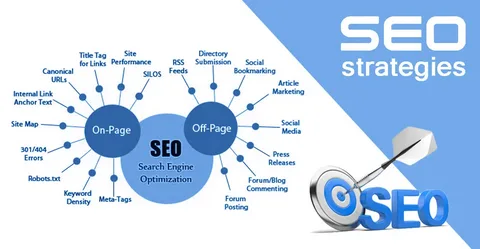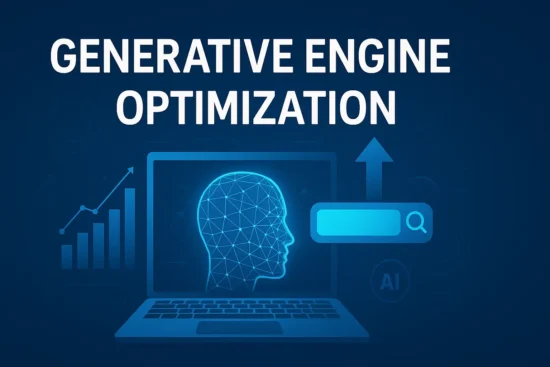
If you’re a business owner, a marketer, or a content creator, you’ve probably heard of SEO (Search Engine Optimization). But what does SEO really mean, and how can you use it to improve your website’s visibility and ranking on search engines like Google? In 2025, SEO strategies continue to evolve with the changing landscape of online behavior, technology, and user experience.
In this blog, we will dive deep into the best SEO strategies for your website in 2025. Whether you’re just getting started with SEO or looking to improve your current strategy, this guide will provide you with actionable steps to drive more organic traffic and boost your online presence.
What is SEO?
SEO stands for Search Engine Optimization, which refers to the practice of optimizing your website so that it ranks higher on search engine result pages (SERPs). This means that when someone searches for a keyword related to your website, your page will have a better chance of showing up in the search results.
By following the best SEO strategies, you can increase your website’s visibility, attract more visitors, and ultimately, improve your conversion rates. These strategies revolve around several factors, including keyword research, content creation, website performance, backlinks, and user experience.
Why is SEO Important for Your Website?
SEO is crucial for your website’s success for several reasons:
- Increased Visibility: The higher your website ranks on search engines, the more likely people are to find you. Studies show that most users don’t go past the first page of search results.
- Organic Traffic: SEO helps you attract free traffic from search engines. Unlike paid ads, organic traffic continues to come even after you’ve done the work to optimize your site.
- Builds Credibility and Trust: Ranking well on search engines boosts your credibility. Users are more likely to trust websites that appear higher in search results.
- Cost-Effective: Compared to paid advertising, SEO is a cost-effective long-term strategy. The time and effort you invest in SEO will pay off over time as your website continues to grow in rankings.
Best SEO Strategies for Your Website in 2025
1. Conduct Thorough Keyword Research
Keyword research is one of the most essential parts of SEO. By understanding what words and phrases your potential customers are searching for, you can create content that matches their needs and queries.
How to Conduct Keyword Research:
- Use Keyword Tools: Tools like Google Keyword Planner, SEMrush, Ahrefs, and Ubersuggest can help you find relevant keywords for your business.
- Look at Search Volume and Competition: Aim for keywords with a good balance of search volume and low competition. High-competition keywords may be harder to rank for, while low-competition ones could bring more targeted traffic.
- Long-Tail Keywords: These are longer phrases that are more specific. They often have lower competition and can be more effective at driving targeted traffic.
- Analyze Competitors: Check what keywords your competitors are ranking for and identify gaps that you can take advantage of.
By using the right keywords, you ensure that your content is aligned with what your target audience is searching for.
2. Create High-Quality, Relevant Content
Content is at the heart of SEO. Without good content, your SEO efforts will fall flat. Google and other search engines prioritize websites with valuable, relevant content that answers users’ questions and provides solutions to their problems.
Tips for Creating High-Quality Content:
- Write for Your Audience: Always keep your audience in mind when creating content. Understand their needs, preferences, and pain points, and create content that addresses those.
- Use Clear and Simple Language: Avoid complicated jargon and write in a conversational tone that is easy to understand. This will keep your audience engaged and improve your chances of ranking higher.
- Focus on User Intent: Ensure your content is answering the questions users are asking. User intent is the reason behind a search query, and optimizing for it helps you align your content with what the user wants to find.
- Update and Repurpose Existing Content: Keep your content fresh by regularly updating old blog posts or pages with new information and insights. Repurposing content, such as turning a blog into a video, can also drive more engagement.
“At DigRab, we provide expert insights, tips, and strategies to help you succeed online. Explore our latest blogs and start improving your digital marketing today!
Visit DigRab now and stay ahead of the competition!“

3. Optimize for Mobile Devices
In 2025, mobile-first indexing is more important than ever. This means that Google primarily uses the mobile version of a website to rank it, even if the user is searching on a desktop. So, ensuring your website is mobile-friendly is an essential part of your SEO strategy.
Mobile Optimization Tips:
- Responsive Design: Use a responsive design that adapts to different screen sizes, ensuring your website looks great on both mobile and desktop devices.
- Fast Loading Speed: Mobile users expect fast-loading websites. If your site takes too long to load, you risk losing potential visitors.
- Simplified Navigation: Keep your mobile navigation simple and intuitive, making it easy for users to find what they need.
- Avoid Pop-Ups: Pop-ups on mobile can be frustrating. If you must use them, make sure they’re easy to close and don’t obstruct the content.
4. Improve Your Website’s User Experience (UX)
User experience (UX) is a ranking factor that Google considers when evaluating your website. A good UX not only keeps visitors happy but also reduces bounce rates and increases the time users spend on your site.
UX Best Practices:
- Fast Loading Speed: As mentioned earlier, ensure your website loads quickly. Tools like Google PageSpeed Insights can help you measure and improve speed.
- Easy Navigation: Make sure visitors can easily find what they’re looking for. Use clear menus, headings, and a well-organized layout.
- Clear Call-to-Actions (CTAs): Your website should have clear CTAs that guide users toward taking the desired action, whether that’s purchasing a product, signing up for a newsletter, or contacting you.
- Mobile Optimization: A mobile-friendly website is part of a good user experience, especially with an increasing number of users browsing from mobile devices.
5. Build Quality Backlinks
Backlinks, or links from other websites to yours, are a significant factor in determining your website’s authority and ranking. Having high-quality backlinks can improve your website’s SEO and credibility.
How to Build Quality Backlinks:
- Guest Blogging: Write guest posts on reputable blogs in your industry and include a link to your website.
- Reach Out to Influencers: Connect with influencers in your industry and ask them to link to your content.
- Create Link-Worthy Content: Content like guides, research papers, and infographics often get linked by other websites.
- Use Tools to Monitor Backlinks: Tools like Ahrefs and SEMrush allow you to monitor backlinks, helping you discover new opportunities.
Remember, the quality of backlinks matters more than the quantity. A few high-quality backlinks from reputable sources can have a more significant impact than hundreds of low-quality links.
6. Focus on Local SEO
If your business serves a local community, optimizing for local SEO is essential. Local SEO helps your business appear in local search results, such as “best coffee shop near me” or “plumber in [city].”
Local SEO Tips:
- Claim Your Google My Business Listing: Ensure your business is listed on Google My Business. This helps you show up in local searches and on Google Maps.
- Use Local Keywords: Include location-based keywords in your content, such as the name of your city or neighborhood.
- Get Reviews: Encourage happy customers to leave reviews on Google and other review sites. Positive reviews improve your chances of ranking in local search results.
- Create Localized Content: Write blog posts or pages that cater to local events, issues, and topics that are relevant to your audience.
7. Leverage Video Content for SEO
In 2025, video content is becoming increasingly important in SEO. Google and other search engines are prioritizing video results, and platforms like YouTube are highly regarded in the search results.
Video SEO Best Practices:
- Optimize Video Titles and Descriptions: Use relevant keywords in your video titles, descriptions, and tags to help them show up in search results.
- Add Captions: Including captions helps improve your video’s accessibility and also makes it easier for search engines to index the content.
- Use Structured Data for Videos: Adding structured data or schema markup to your videos helps search engines understand the content, which can improve your visibility.
8. Monitor and Measure Your SEO Performance
To ensure that your SEO strategy is working, you need to monitor and measure your website’s performance regularly. This allows you to identify areas for improvement and make necessary adjustments.
Tools for Monitoring SEO:
- Google Analytics: Track traffic, user behavior, and conversions.
- Google Search Console: Monitor your website’s performance in Google search results, including impressions, clicks, and average ranking.
- SEMrush and Ahrefs: Use these tools for keyword tracking, backlink monitoring, and competitor analysis.
By consistently measuring your SEO efforts, you can adapt and optimize your strategy over time.
9. Optimize for Featured Snippets
Featured snippets are the boxed information that sometimes appears at the top of Google search results. Optimizing your content for featured snippets can give you a competitive edge and increase visibility.
Tips for Optimizing Featured Snippets:
- Answer Questions Directly: Featured snippets often pull information that answers a question. Structure your content in a way that directly answers common questions in your industry.
- Use Lists, Tables, and Bullet Points: Content that is easy to read and formatted with bullet points or numbered lists is more likely to appear as a featured snippet.
- Keep It Concise: Google usually pulls short, clear answers. Aim for content that is around 40-50 words for featured snippet opportunities.
Conclusion: Stay Ahead in SEO
SEO is a continuous process, and staying on top of the latest strategies is essential for improving your website’s ranking in 2025. By focusing on keyword research, high-quality content, user experience, mobile optimization, and local SEO, you can ensure that your website is well-positioned to succeed.
Remember, SEO is not a one-time effort. Regularly monitor your performance, stay updated with algorithm changes, and continually optimize your site to keep improving. By doing so, you will see an increase in traffic, higher rankings, and ultimately, greater success for your website.
So, implement these strategies today, and watch your website rise to the top of search engine results in 2025 and beyond!
If you want to read more blogs like this, visit our website for expert strategies and tips!




Leave a Reply